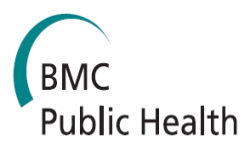
Decallonne, B., Snyers, B., Elaut, N. et al. Combining data to perform population-based observational studies: know your sources. The case of thyroid cancer in Belgium. Arch Public Health 80, 77 (2022). https://doi.org/10.1186/s13690-022-00803-8
Abstract
Background
Large scale observational studies are crucial to study thyroid cancer incidence and management, known to vary in time and place. Combining cancer registry data with other data sources enables execution of population-based studies, provided data sources are accurate. The objective was to compare thyroid tumour and treatment information between the available data sources in Belgium.
Methods
We performed a retrospective national population-based cohort study. All patients with thyroid cancer diagnosis in Belgium between 2009 and 2011 (N = 2659 patients) were retrieved from the Belgian Cancer Registry database, containing standard patient and tumour characteristics. Additionally, information was obtained from the following sources: a) detailed pathology reports b) the health insurance company database for reimbursed performed therapeutic acts (both available for N = 2400 patients) c) registration forms for performed and/or planned treatments at the time of the multidisciplinary team meeting (available for N = 1819 patients). More precisely, information was retrieved regarding characteristics of the tumour (histologic subtype, tumour size, lymph node status (source a)) and the treatment (thyroid surgery (a,b,c), lymph node dissection (a,b), postoperative administration of radioactive iodine (b,c)).
Results
High concordance in histological cancer subtype (> 90%), tumour size (96.2%) and lymph node involvement (89.2%) categories was found between the cancer registry database and the pathology reports. Tumour subcategories (such as microcarcinoma, tumor ≤1 cm diameter) were more specified in the pathology reports. The therapeutic act of thyroid surgery as mentioned in the pathology reports and health insurance company database was concordant in 92.7%, while reports from multidisciplinary team meetings showed 88.5% of concordance with pathology reports and 86.1% with health insurance data. With regard to postoperative radioiodine administration, reports from multidisciplinary teams and health insurance data were concordant in 76.8%.
Conclusion
Combining registered and/or administrative data results in sufficiently accurate information to perform large scale observational studies on thyroid cancer in Belgium. However, thorough and continuous quality control and insight in strengths and limitations of each cancer data source is crucial.



